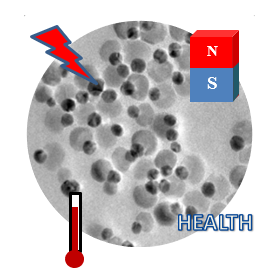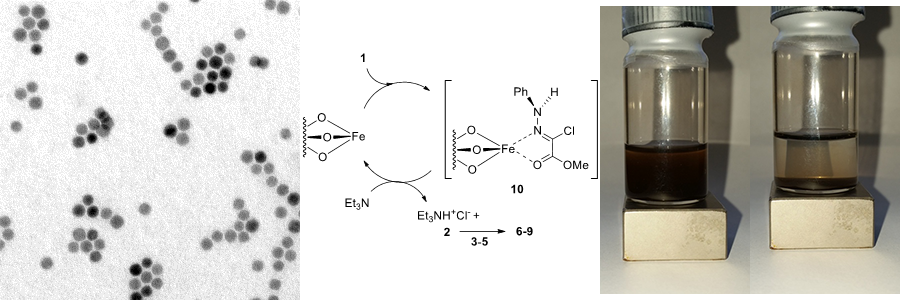
Multifunctional magnetoplasmonics Au-Fe oxide nanoparticles joints photonics, magnetism, thermal and health applications.
Fluid suspensions of magnetic nanoparticles
Magnetic properties are strongly correlated to other properties of matter and hence the magnetic materials can show multifunctional properties. Multi-active materials can be designed by exploiting the interlink and coupling of different functionalities. IMEM-CNR-ASTER has wide competence in this type of materials; in particular, in magnetostrictive, multiferroics, magnetocalorics, magnetic shape memory, magneto-optics, magneto-plasmonics and theragnostics materials. They exhibit simultaneously the combination, linking, and correlation of the magnetic properties and the structural, morphological, electrical, thermal, and optical properties. Our team has competences in the preparation of these materials in different morphologies, bulk thin films, hybrid nanoparticles and nanocomposites. In addition, the team combines different competences in structural and morphological magnetic, optical and magneto-optical characterizations and their thermal and/or cooling variations. The team is now working in the framework of the industrial project Frimag (www.laboratoriomister.it/portfolio/frimag/) for the development of novel refrigerators based in the magneto-caloric effect.
At CNR-ISTM in Milano, the use of magnetic nanoparticles as quasi-homogeneous catalysts for the synthesis of organic fine chemical is actively developed. Magnetic nanoparticles catalyze the synthetic reaction, are easily separated from the reaction mixture by magnetic field gradients, and can be robustly recycled. Efficient and fast separation of the magnetic catalyst from the reaction mixture depends on the magnetic properties of the nanoparticles that are measured by magnetometry.

Magnetic nanoparticles (left, TEM image) act as catalysts in 1,3-dipolar cycloaddition reaction (middle, proposed mechanism) and can be quickly separated from the reaction mixture by a small NIB magnet (right, photos were taken 0 and 40 sec. after application of the magnet).
